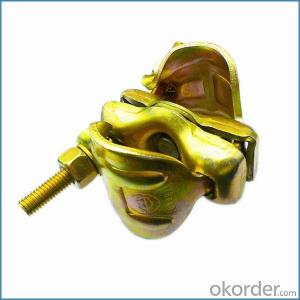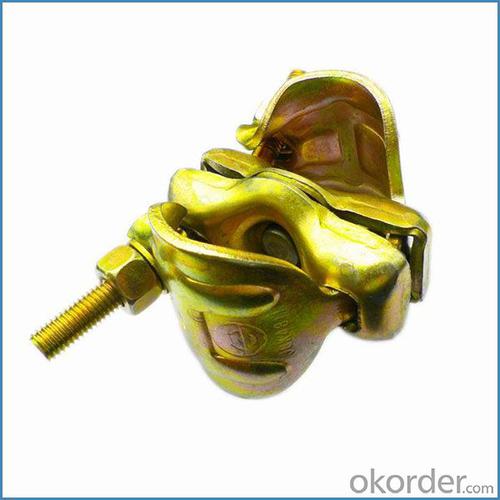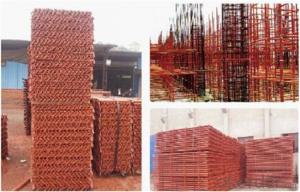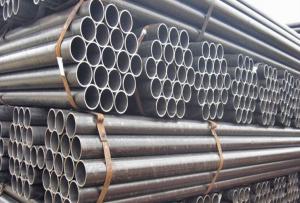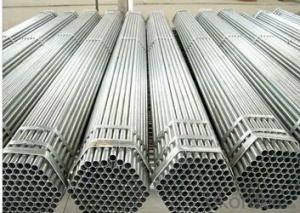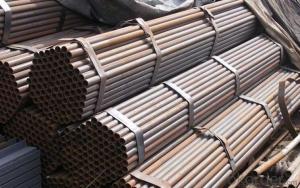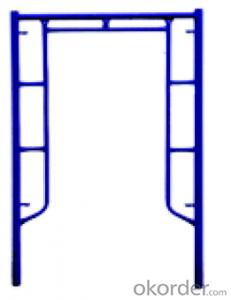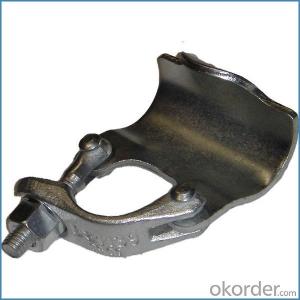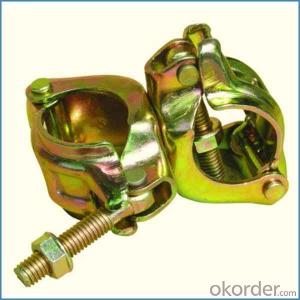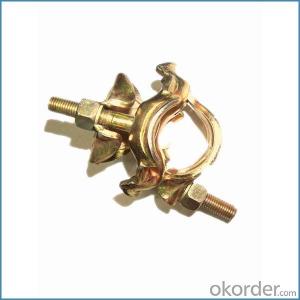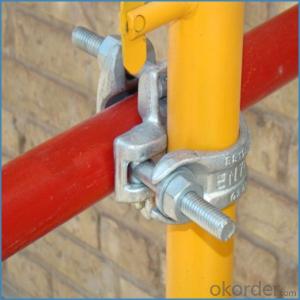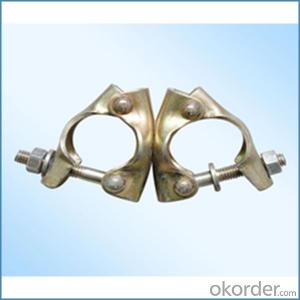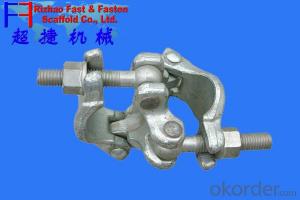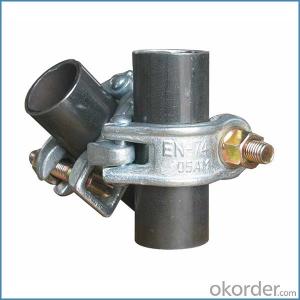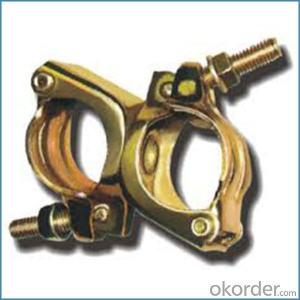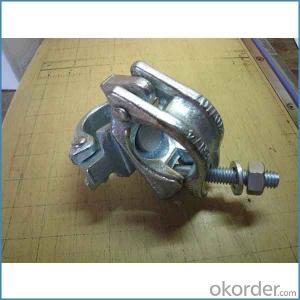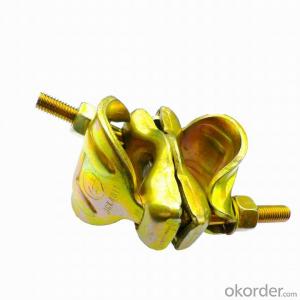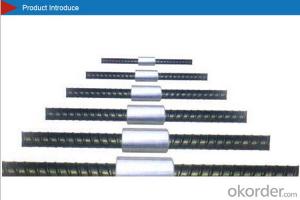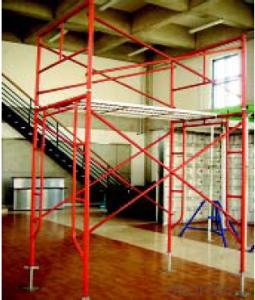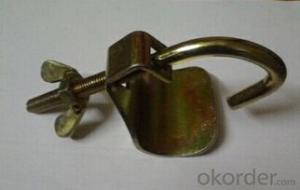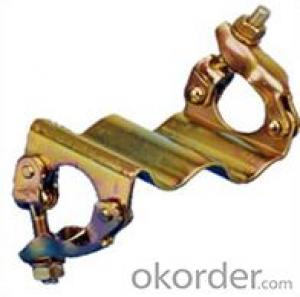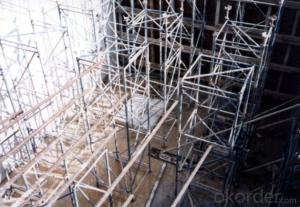Scaffold Right Angle Coupler British Type for Sale
- Loading Port:
- Tianjin
- Payment Terms:
- TT OR LC
- Min Order Qty:
- 1000 kg
- Supply Capability:
- 100000 kg/month
OKorder Service Pledge
OKorder Financial Service
You Might Also Like
Scaffold Right Angle Coupler British Type for Sale
Description
1.The scaffolding coupler is always used to connect the steel pipe as scaffolding system.
2.The often used coupler is swivel coupler and righ angle coupler .
3.We can provide types of scaffolding coupler according to your requirement.
4.Couoler can fix the 48.3mm scaffolding steel pipe tightly and make the whole scaffolding system more steadily.
5.Material:Q235 steel
6.Overall Size:48.3mm*48.3mm
7.Surface Finish: Galvanized/ Painted
8.Standard:BS1139,EN74
9.Package:25pcs/bag
10.Manufactuering as per customer requirements
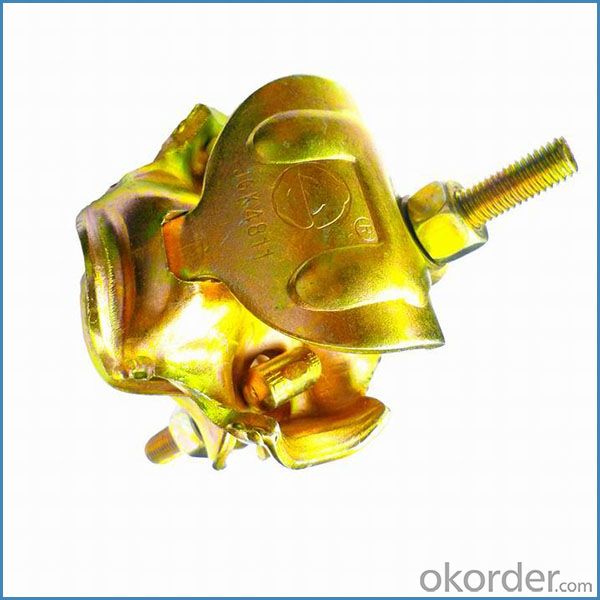
Feature
(1)Excellent Anti-Breaking—Cold Pressed Steel
(2)Outstanding Resistance Deformation
(3)Strong Anti-Dropping Ability
(4)Longtime USe
(5)Qualtity Guaranteed
(6)OEM Service
Photo
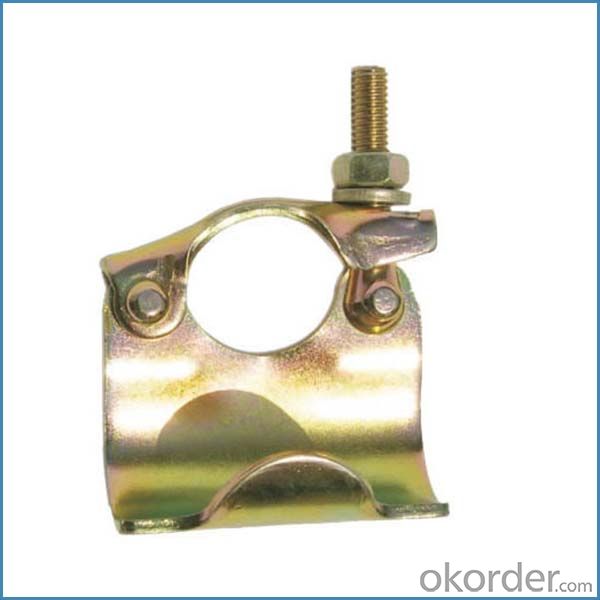
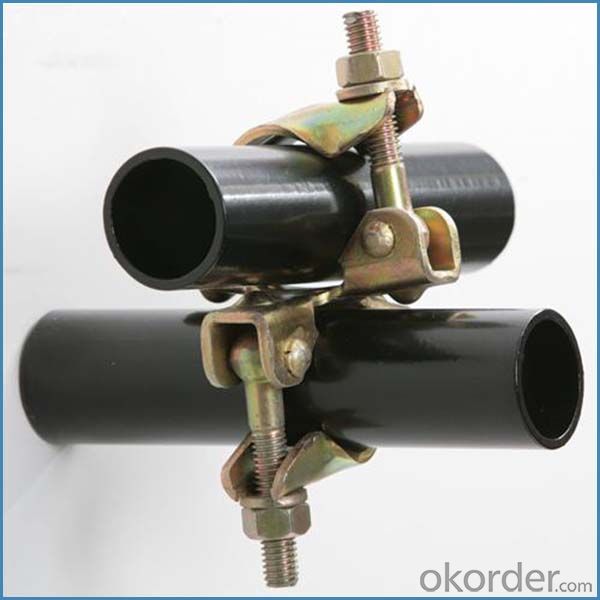
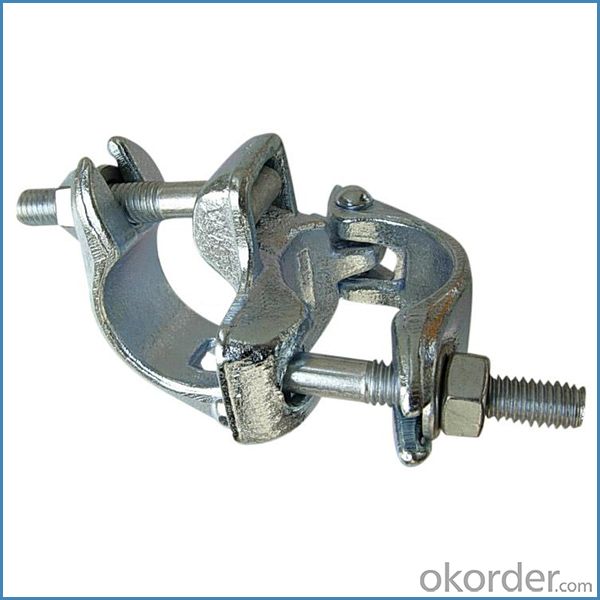
Parameter
| Material | Q235,345steel |
| Size | 48.3mm*48.3mm |
| Surface finish | Galvanized |
| Weight | 1.1kg around |
| Standard | BS1139,EN74 |
| Package | 25pcs/bag,steel pallet |
| Manufacture | As per customer requirement |
| Market | Africa, South America, the Middle East and Asia |
FAQ
Q: Are you a factory or trading company?
We are a state-owned corporation in China,dealing with various kinds of building materials.We have our holding subsidiaries.
Q: Where is your factory located? How can I visit there?
Our factory is located all around China.
Q: Can I get some samples?
Sample is free, customer only pay freight for the first time.
Q: Delivery?
10-30days. (5-15 containers)
Any question,feel free to contact us.
- Q: What are the different types of steel tube couplers used in scaffolding?
- Scaffolding utilizes various types of steel tube couplers, each with its own purpose. Here are some commonly used ones: 1. The Double Coupler: This coupler is widely employed in scaffolding to connect two steel tubes at a right angle, ensuring a secure joint. It finds frequent use in the construction of scaffolding structures. 2. The Swivel Coupler: This coupler allows for a 360-degree rotation, making it ideal for connecting steel tubes at different angles. It is often utilized when scaffolding needs to be erected on uneven ground or when tube angles must be adjusted. 3. The Sleeve Coupler: Sleeve couplers connect two steel tubes end-to-end, extending the length of scaffold tubes. They are commonly used when additional length is required or when scaffolding needs to be extended. 4. The Putlog Coupler: Putlog couplers are specifically designed to connect putlogs or transoms to the ledgers of scaffolding structures. They provide a platform for workers to stand on while working on the scaffold. 5. The Beam Clamp: Beam clamps are used to attach scaffolding tubes to steel beams or other structural supports. They are commonly used when scaffolding needs to be attached to existing structures, such as in industrial settings or during renovation projects. 6. The Gravlock Girder Coupler: Gravlock girder couplers securely connect scaffolding tubes to steel girders or I-beams. They are frequently employed in heavy-duty applications, such as large-scale construction projects or when scaffolding needs to support heavy loads. These examples demonstrate the various types of steel tube couplers used in scaffolding. The selection of a coupler depends on the specific requirements of the structure and the tasks at hand. Choosing the appropriate coupler is crucial for ensuring the safety and stability of the scaffold.
- Q: Are steel tube couplers suitable for supporting platforms or decking on scaffolding?
- Yes, steel tube couplers are suitable for supporting platforms or decking on scaffolding. Steel tube couplers are designed to connect steel tubes securely, providing a strong and reliable connection. They are commonly used in scaffolding systems to create a stable platform for workers to access elevated areas. Steel tube couplers are durable and can withstand heavy loads, making them ideal for supporting platforms or decking on scaffolding. Additionally, they are easy to install and can be adjusted to various angles and positions, allowing for flexibility in scaffolding design. Overall, steel tube couplers are a trusted and effective solution for supporting platforms or decking on scaffolding.
- Q: How do steel tube couplers affect the overall stability and safety of a scaffolding structure?
- Steel tube couplers play a vital role in enhancing the stability and safety of a scaffolding structure. They provide a strong and secure connection between the steel tubes, ensuring the structure can withstand various loads and stresses. Couplers help to maintain the alignment and integrity of the scaffold, preventing any potential collapse or failure. Their robust design and reliable performance contribute to the overall stability and safety of the scaffolding system, providing a secure platform for workers to carry out their tasks at height.
- Q: How do steel tube couplers prevent tubes from slipping laterally?
- Steel tube couplers prevent tubes from slipping laterally by providing a strong and secure connection between two tubes. The couplers are designed to tightly grip the tubes, ensuring that they remain in place and resist any lateral movement or slippage.
- Q: I got my scaffolding piercing done earlier this year but it got infected and just wouldn't heal. I took it out to let it heal up and now it's fine, I have no visible bumps either. Should I get it done again? or leave it because it got infected first time? I have also always had trouble with helix piercings not healing properly.Any advice?
- Don't get it again if it got infected the first time and specially if your helix piercing has problems as well...it's like asking for it to get infected again.
- Q: Are steel tube couplers suitable for supporting platforms or decking on scaffolding?
- Steel tube couplers are a great option for supporting platforms or decking on scaffolding. Designed to securely connect steel tubes, they offer a strong and reliable connection. These couplers are frequently used in scaffolding systems to create a stable platform for workers to reach higher areas. Not only are they durable and capable of handling heavy loads, but they are also easy to install and can be adjusted to different angles and positions. This flexibility allows for various scaffolding designs. In summary, steel tube couplers are a reliable and efficient choice for supporting platforms or decking on scaffolding.
- Q: How do steel tube couplers ensure proper alignment and positioning of scaffolding tubes?
- Steel tube couplers ensure proper alignment and positioning of scaffolding tubes by securely connecting and holding them together. The couplers are designed to fit around the tubes and are tightened with bolts or clips, creating a strong and stable connection. This ensures that the scaffolding structure remains sturdy and level, minimizing the risk of accidents or collapse. Additionally, the couplers are typically designed with a swivel feature, allowing for easy adjustment and alignment of the tubes to achieve the desired height and angle for the scaffolding system.
- Q: I heard this song today where this guy is singing about a scaffold of lighters... what the heck is that? I know what a scaffold is and I know what lighters are but a scaffold of lighters???
- A scaffold of ladders?
- Q: Are there any guidelines for the proper torque or tightening of steel tube couplers in scaffolding?
- Yes, there are guidelines for the proper torque or tightening of steel tube couplers in scaffolding. It is recommended to follow the manufacturer's specifications and instructions for torque values, as they may vary depending on the specific type and size of coupler being used. Additionally, it is crucial to ensure that the couplers are tightened securely, but not over-tightened, to maintain the structural integrity of the scaffolding system and ensure worker safety.
- Q: Just wondering.
- For some people it does not have a meaning. They just like it.
Send your message to us
Scaffold Right Angle Coupler British Type for Sale
- Loading Port:
- Tianjin
- Payment Terms:
- TT OR LC
- Min Order Qty:
- 1000 kg
- Supply Capability:
- 100000 kg/month
OKorder Service Pledge
OKorder Financial Service
Similar products
Hot products
Hot Searches
Related keywords
